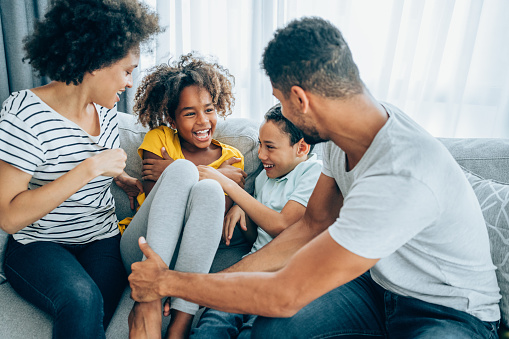When you decide to pursue adoption, there will be many instances when your family’s situation will look unique from others who have gone before you. Life after adoption will also be unique. Whether that be in how you discipline, the vacations you take, the names you use, or the holidays you celebrate, there will be many circumstances that call for leading your family in a nonconventional way. One way that may be very different than how others approach raising their children is the idea of cocooning.
Cocooning is the time after an adopted child has come home where the family chooses to limit the child’s exposure. This typically means that the family stays home, almost isolated, and maintains just the immediate family within the home (without any visitations from others). This can be a different experience from what your friends may do with the arrival of a child. Maybe they decided to host a belated baby shower for their child once they were born, or maybe grandparents had flown in for the birth. When you adopt a child, your adoptee may be experiencing a deep sense of loss. If they are older, they may experience culture shock, a language barrier, and/or family life for the first time. Yet, regardless of their age, they are experiencing a loss of everything they’ve ever known. Even as infants, they have experienced trauma and fear. The ripples of this can affect them well into adulthood and, as their parents, we must help them to navigate their history. That often starts with the cocoon.
As parents to children from hard places, trauma, and loss, we have a duty to help them navigate their own history. Protecting them from the instant exposure that life brings can help to slow the recoil of newness so overwhelm doesn’t have the opportunity to set in as strong. Cocooning can give a child time to grieve and it can give us the opportunity to grieve alongside them. This can be a way that they hold on to a small shred of their privacy as they learn to navigate an entire new world.
Often, when adoptive families choose to cocoon, that means the only people allowed in the home (or around the family) are those within the immediate family. Barring unforeseen circumstances, this allows the new child to fully attach to their new parents without the confusion of other caretakers (i.e. grandparents). They can learn to seek out Mom and Dad when they have a physical or emotional need met. Only allowing immediate family members to interact with your child for a short time after coming home allows the child to become accustomed to their new family before the introduction of extended family members. This also means it’s obvious who does the caretaking-–if your child needs to eat, they have no one else to ask except you.
Cocooning can also mean limiting your child’s exposure to the outside world. During the cocooning period, many families choose to stay inside the home for a few weeks while their child learns who their family is, where and what their new home looks like, and the interworkings of family life. The outside world is loud, full of new people (and a potentially new culture), and houses plenty of overstimulating things. For a child who has lost it all, too much newness can be unbelievably overwhelming. Their family is new, their home is new, the smells are new, their clothes are new, the sounds are new . . . lessening the amount of newness by isolating your family inside your home for a few weeks can really help your child become accustomed to their new life in a healthy and slow way.
Some families choose to partially cocoon, where they still go to stores, have grandparents and extended family over, and experience some outside-of-the-home activities, but it is still limited. Maybe they don’t allow non-family members to come over to the house for a few weeks. Maybe they prolong the introduction of school in the beginning. Maybe that family chooses to only visit stores together as a family–no one shops alone. Whatever it may look like for your family, know that any type of cocoon can be a positive experience.
As you want to start phasing your cocooning time out, you may start introducing grandparents, or short daily trips to the store. Grocery shopping may not only be a great introduction to the world, but it can also be a good attachment activity for you and your child (if they are older). Beginning to take daily walks around the neighborhood or park may be a great way to show your child their surroundings without causing too much overwhelm-–this goes for infants and older children. Small introductions can help their brain slowly process the world around them as they begin to navigate their new life.
Helping your child through their grief, whether you have adopted an infant or an older child, is so important for us as parents of children from trauma. Cocooning can be an integral part of the initial healing for your child and can aid in attachment and acclimation. Without cocooning, your child is may be at risk for overexposure, overwhelm, shock, and overstimulation (and all the behaviors that come from deep-seated feelings). I believe that cocooning can help protect your child, and their heart from a new world they are experiencing for the first time. Whether you decide to do a full cocoon, or if you choose to only do a partial one, keeping your child’s world small will benefit them in the long run. Maintaining a small circle of exposure will help your child attach easier to you as parents, will help them have space to grieve appropriately, and will allow them proper time to acclimate to their new life. The cocoon can be a wonderful tool we as parents can utilize to help protect a child from the world. They may feel that they have lost everything in their lives and deserve to be protected. We can’t heal all of their wounds—some are too deep that even love can’t reach, but we can do our best to lessen the blow society will place on them, and make sure that we are a soft place to land.




